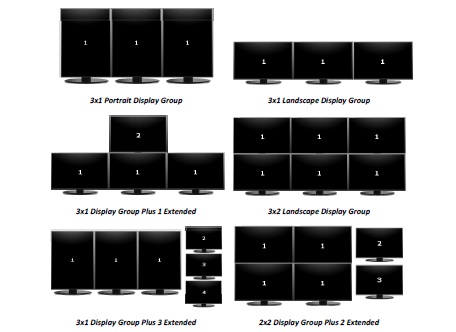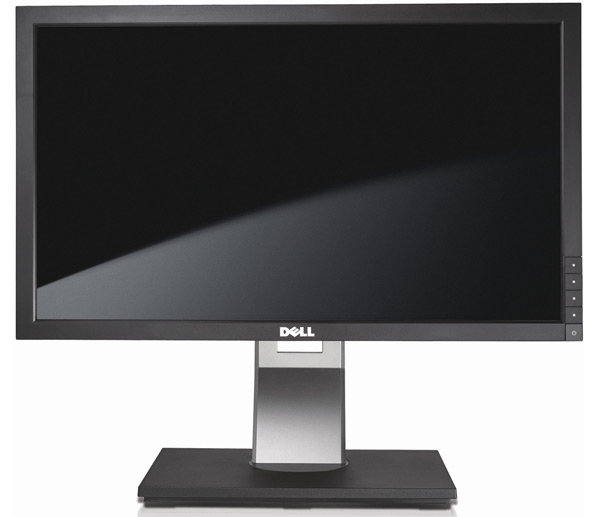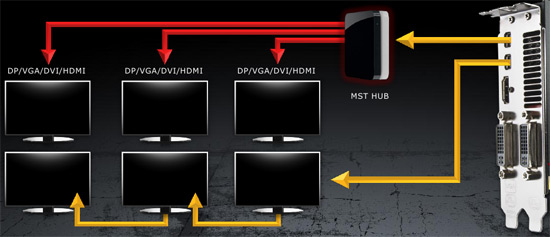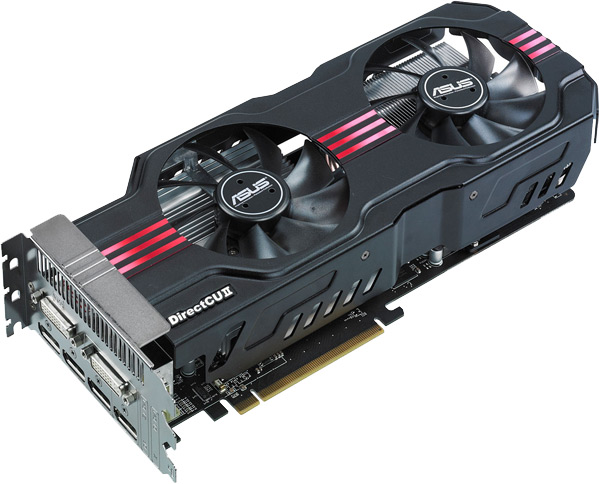AMD Six Screen Eyefinity Review
Andy Ruffell / 13 years ago
Hardware NeededIf you are wanting to set up an Eyefinity configuration, we will warn you now, it’s not cheap. It involves many different factors and they include the monitors, the graphics card, and space. So as we look further into this, let’s take a look at each aspect one by one.
The space needed all depends on what type of Eyefinity setup you are hoping for but generally won’t see much of a difference between the different combinations.
Some monitors allow you rotate them into a portrait mode or landscape mode, but this is all down to personal preference and of course how much space you have available. Three monitors in portrait mode will obviously take up a lot less room than three monitors in landscape mode.
We’ve seen a few articles and videos on Eyefinity and whilst everyone shows the same thing, we thought that we’d go one better. You can search around and find a lot of information on a 3×1 landscape configuration but a six monitor Eyefinity display seems to be missing, so we thought we’d fill that void.
There is a huge array of monitors on the market and we’re not going to delve to far into it as it’s all down to personal choice and of course budget. Today we are using the Dell P2210 monitors which are 22″ flat screen monitors which include VESA mounting capabilities which is perfect for our monitor stand. It’s also perfect to use as they are relatively cheap to buy and give a good balance of performance in both games and movies.
If you prefer, you can buy more expensive DisplayPort 1.2 monitors which allow for daisy-chaining in Eyefinity, but we still feel this can lead to a very expensive outlay and something that most users will not want to commit to.
The last thing needed is of course a graphics card capable of running the sheer amount of monitors. Nvidia cards sadly don’t have the functionality straight out of the box to run more than three monitors using the Nvidia Surround technology. AMD however implement more connections onto their cards and generally a mid to top-range card will see five display connectors on the rear I/O. Having five connections is great, and will allow for five monitors or more if you purchase the more expensive DisplayPort 1.2 capable monitors which allows you to daisy-chain the monitors together.
The other option is to purchase a DisplayPort hub which will set you back around £150, but if you have the money, then why not?
The easiest and more cost effective way in our eyes is to use a card that incorporates six connections. We’ll just give you a few seconds to search for a card with that kind of functionality…
Being honest, the choice for this type of card isn’t exactly booming, but we were able to get our hands on one that does exactly what we we’re hoping for; the Asus Radeon HD 6950 DirectCU II.
The card itself is part of the 6900 series range, and therefore offers all of the latest technology from AMD. It incorporates a patented cooler and more importantly has the six outputs we need to run our Eyefinity setup of six screens.
The video below shows exactly what a six screen Eyefinity setup looks like as well as the hardware used to enable this kind of configuration:
























